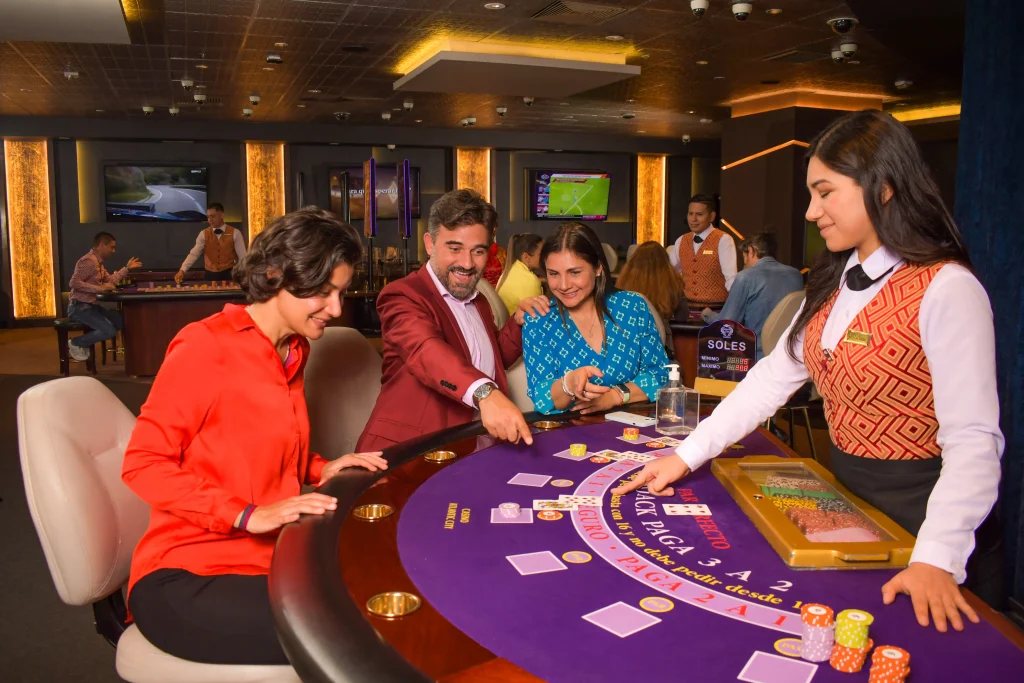
Casino games have long captivated the human imagination, drawing participants into a universe filled with chance, tactics, and the allure of adventure. Each game is carefully crafted not just for fun, but also to elicit specific emotional responses that keep participants involved and interested. Understanding the motivations behind these designs reveals much about how human psychology plays a crucial role in the gaming experience.
From the vivid lights and vibrant sounds to the intricate layering of guidelines and rewards, casino games are designed to create an atmosphere of anticipation and eagerness. Game designers leverage mental cues to influence player behavior, whether through the use of big prizes, close-call situations, or social connections. By examining these factors, we can better appreciate how casino games fulfill not just a need for entertainment, but more profound psychological needs for thrill and risk.
Comprehending Player Actions
Casino games are designed with a deep understanding of gamer psychology, which is vital for luring and keeping players. The rush of the game, combined with the hope of winning, produces a formidable attraction. Game designers utilize elements like sound effects, colorful graphics, and engaging gameplay to capture attention and generate emotional responses. These sensory elements enhance the total environment, making players feel more involved in the game.
Another significant aspect of player behavior is the concept of risk and reward. Casino games often weigh high-risk scenarios with the potential for substantial rewards, which can cause the occurrence known as near-miss effect. When players come within reach to winning, the brain secretes dopamine, bolstering their behavior and motivating them to continue playing in quest of that hard-to-reach win. This cycle of wish and disappointment plays a critical role in how games are constructed and marketed.
Lastly, social elements also play a pivotal role in player behavior at casinos. Many games are designed to be played in pairs or in company with other players, fostering a sense of community and collective experience. The community engagement inherent in games like blackjack enhances enjoyment and can lead to prolonged gaming periods. Designers capitalize on this by designing environments that encourage players to remain, socialize, and come back, making the overall casino experience more appealing.
The Role of Visuals and Audio
Visuals and sound play a crucial role in improving the gambler’s experience within gambling games. Designers utilize bright colors, eye-catching graphics, and engaging animations to grab gambler’s attention and maintain their interest. The use of motifs, such as exploration or luxury, helps create an immersive atmosphere that transports players into another world. By appealing to the senses, these elements add to a heightened emotional response, encouraging players to interact more deeply with the games.
Sound design is equally important in reinforcing the overall experience of gambling games. The combination of ambient music, sound effects for winning combinations, and ambient noises creates an auditory landscape that holds players fascinated. Audio cues associated with victories, such as chiming bells or celebratory music, evoke feelings of thrill and satisfaction, encouraging players to continue playing. These audio cues are carefully placed to enhance the excitement of the game and create a more engaging experience.
Additionally, the alignment of imagery and sound is important for reinforcing the game’s overall concept and atmosphere. Each element should coordinate harmoniously to create a cohesive experience that draws players in. The effective use of this synergy not only improves user satisfaction but also increases the likelihood of return play, as players become more engaged in the immersive world that the casino games offer. This thoughtful combination of visuals and sound ultimately enhances player involvement and loyalty.
Reward Systems and Engagement
The creation of casino experiences greatly relies on reward structures to ensure players engaged and coming back for more. These systems are rooted in behavioral principles that exploit human nature and motivation. Players are often motivated by the excitement of winning, which is supported by instant responses through the game’s mechanics. This instant gratification not just improves the overall experience but also fosters a feeling of achievement, prompting participants to keep participating in hopes of greater rewards.
Casinos adopt various incentive systems, including jackpots, extra rewards, and multipliers, to captivate participants. These features create a layer of thrill that sustains interest. Additionally, the unpredictability of outcomes plays a crucial role in sustaining interest. The variable reward system, where successes are random but occur often enough, keeps players on edge and motivated to continue participating. This cycle of hope and expectation is essential to the effectiveness of gambling experiences. https://officeart.london/
Moreover, social elements, such as competitive events and multiplayer features, enhance the engagement factor by tapping into the competitive nature of participants. The communal aspect of gaming with fellow participants can intensify the excitement of success and create a sense of community within the gaming space. By integrating these community elements with effective reward systems, gambling experiences not only offer fun but also nurture a deeper bond among participants, solidifying their loyalty to the overall experience.
